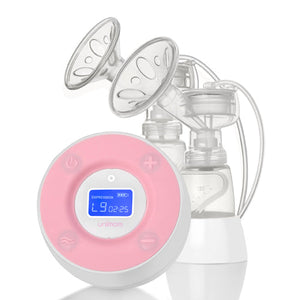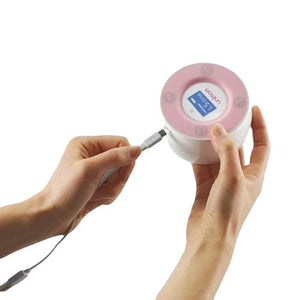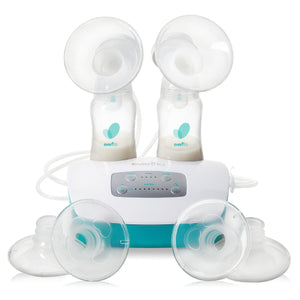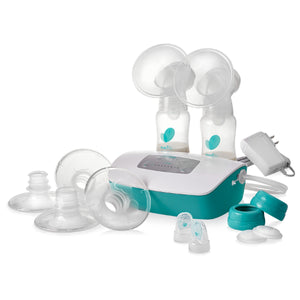To clean your breast pump properly, always wash hands first, disassemble all parts, rinse and scrub with warm soapy water, and air dry completely. Regular cleaning prevents bacterial buildup and keeps your breast pump safe for daily use. Follow the manufacturer's guidelines to avoid damage and ensure baby safety.
Why Cleaning Your Breast Pump Matters
Keeping your breast pump clean is essential to protect your baby from germs and ensure your milk stays safe. Whether you are using a manual pump or an electric breast pump, regular cleaning reduces the risk of mold, bacteria, and milk residue buildup. For mothers who pump multiple times a day, proper hygiene is non negotiable.
Steps to Clean a Breast Pump Effectively
Cleaning a breast pump properly is vital to keep it safe and hygienic for your baby. This comprehensive guide will make cleaning your breast pump simple.
1. Disassemble the Pump
The first step is to disassemble every component of the breast pump that comes into touch with breast milk. It includes:
- Flanges (the part that goes on your breast)
- Valves (the part that controls the flow of milk)
- Membranes (the small, flexible parts that help the pump work)
- Bottles
- Tubing, if your pump has it.
Taking the pump apart makes it easier to clean every part thoroughly. To choose the correct breast pump, read how to measure your flange size properly.
2. Rinse Each Part
Once you have separated all the parts, rinse each under running water to remove any milk residue. Use cool or warm water for this step.
Rinsing helps remove milk that might stick to the parts and makes the next steps easier.
3. Wash with Soap and Water
Next, add a small dish soap to warm water in a sink or basin. Put every pump component in the soapy water. Scrub every area well with a fresh brush or towel.
Pay special attention to small parts like valves and membranes, as milk can get trapped in them. This step ensures that all the milk residue is cleaned off.
4. Rinse Thoroughly
Rinse every component under running water to remove any remaining soap residue after cleaning.
Ensure no soap residue is left on the parts because soap can be harmful if it gets into your baby's milk.
5. Dry Completely
Once rinsed, place the parts on a clean towel or drying rack to air dry completely. Ensure they are spread out and not stacked on each other to prevent mold and bacteria growth.
Another way to maintain them hygienic and secure for your child is to let them air dry.
6. Sanitize (Optional but Recommended)
Sanitizing the parts is optional but recommended. There are various methods by which you can sterilize the parts:
- Boiling Method: Boil the parts in a water kettle for five to ten minutes. After removing them with tongs, lay them on a fresh towel to air dry.
- Steam Sanitizer: Follow the instructions on your steam sanitizer device to sanitize the parts.
- Microwave Steam Bag: Place parts in a microwave steam bag with water and follow the instructions on the bag.
Sanitizing helps to kill any remaining germs and keeps the parts extra clean.
7. Clean the Tubing (If Applicable)
If your pump has tubing that comes into contact with milk, rinse the tubing in warm water. Rinse it well after giving it a good wash in soapy water.
Hang the tubing to air dry, ensuring water can drain completely. Keeping the tubing dry helps to prevent mold from growing inside.
8. Store Properly
Once all parts are dry, store them in a clean container or bag until the subsequent use. It keeps them free from dust and contaminants.
Ensure the storage area is clean and dry to maintain the cleanliness of the pump parts.
9 Clean Your Hands
Before touching the cleaned pieces, always wash your hands with soap and water.
This step is important to keep the parts as clean as possible and avoid transferring germs to them.
10. Regular Deep Cleaning
It's also important to regularly deep clean and sanitize your pump parts, even if they look clean. Follow the sanitizing steps at least once a day if you pump frequently.
Deep cleaning helps to ensure that no bacteria or mold can grow on the parts.
How Often Should You Clean Breast Pump Parts
Clean all parts that come in contact with breast milk after every use. For working mothers or frequent pumpers, clean after each session to maintain hygiene. If you are using shared or hospital grade pumps, sterilization after each use is required.
Navigating Breast Pump Cleaning Guidelines
Always check the instruction manual that comes with your breast pump model. Some parts are dishwasher safe while others are not. Follow the cleaning instructions for your specific brand to ensure no damage occurs. For example, Medela, Spectra, and Evenflo all have slight variations in cleaning steps.
Additional Tips
- Use breast pump sanitizing wipes when on the go
- Sterilize parts once a day if you pump frequently
- Store dry parts in a clean, closed container between uses
- Use a breast pump drying rack to avoid contamination
Frequently Asked Questions (FAQs)
1. How often should I clean my breast pump?
You should clean all breast pump parts that come in contact with breast milk after every use. This helps prevent the growth of bacteria and keeps your milk safe for your baby.
2. Can I use a dishwasher to clean breast pump parts?
Some breast pump parts are dishwasher safe, but not all. Always check the manufacturer's guidelines. If permitted, place parts on the top rack and use a hot water and heated drying cycle.
3. What is the best way to sanitize breast pump parts?
To sanitize breast pump parts, boil them in water for five to ten minutes or use a steam sterilizer. You can also use breast pump sterilizing bags or microwave-safe options designed for pump accessories.
4. Do I need to clean the tubing of my breast pump?
Tubing should be cleaned only if it comes into contact with breast milk or moisture. In most cases, tubing does not require regular cleaning unless there's visible condensation or milk backup. If it becomes moldy, replace it immediately.
5. Can I use breast pump wipes when traveling?
Yes, breast pump cleaning wipes are convenient for cleaning pump parts when soap and water are not available. However, they are not a substitute for regular thorough washing at home.
Conclusion
Keeping your breast pump clean is a simple but critical step in your daily routine. It ensures your baby’s safety, maintains the pump’s performance, and gives you peace of mind.
Need cleaning accessories or a new hygienic breast pump kit
Explore Moovkart’s selection of manual and electric breast pumps, replacement parts, and breast pump cleaning kits to support your breastfeeding journey.
Shop now at Moovkart for trusted brands and safe feeding solutions








